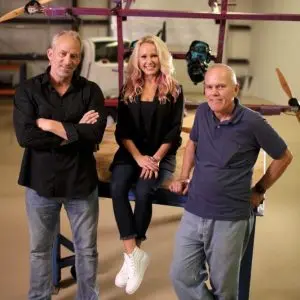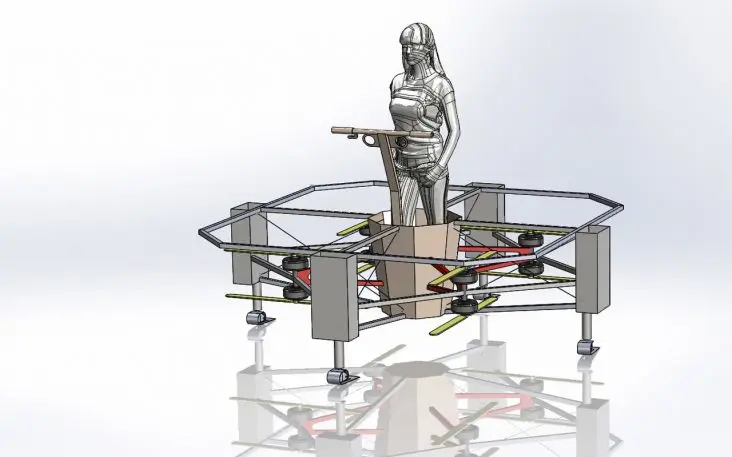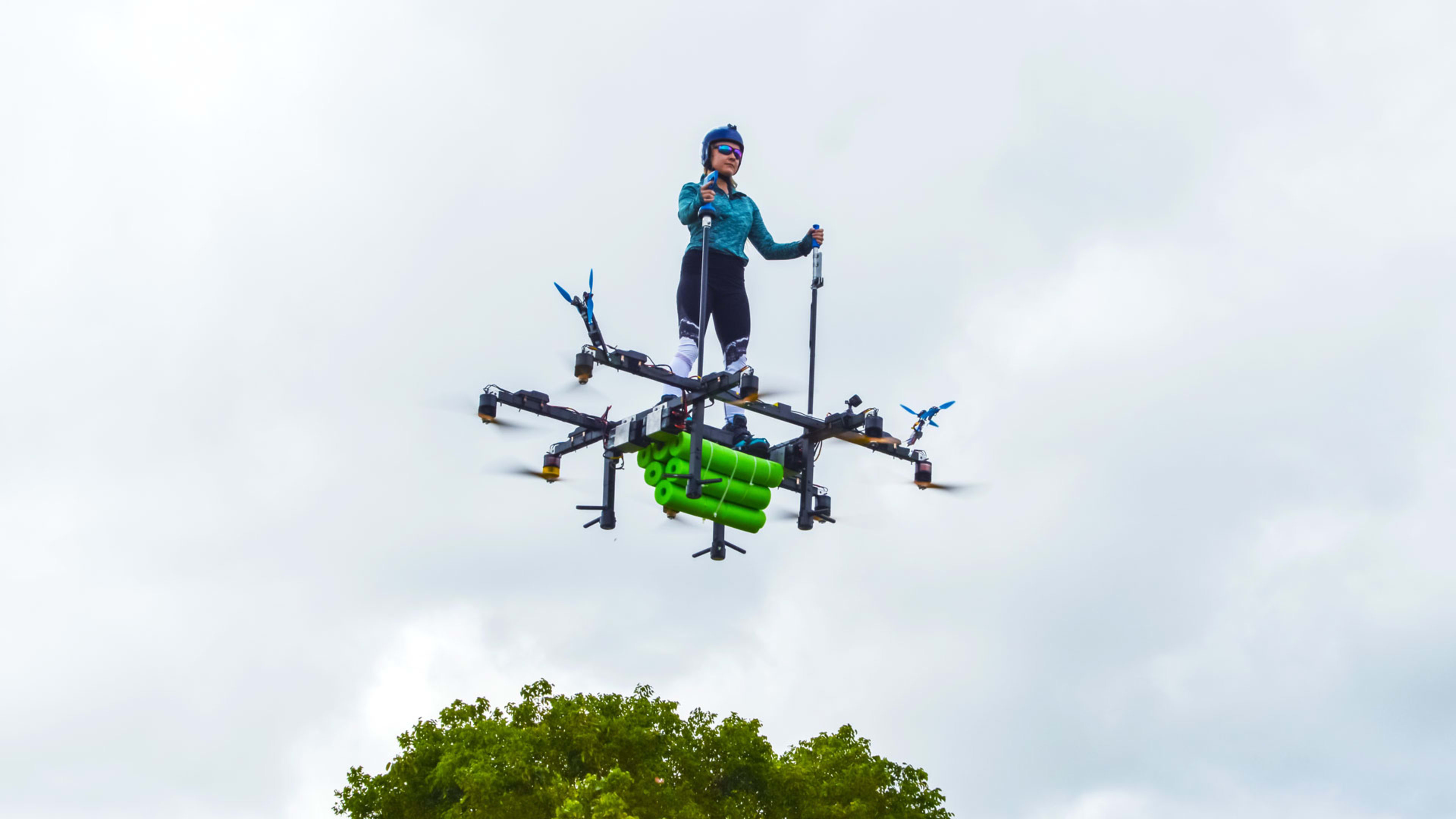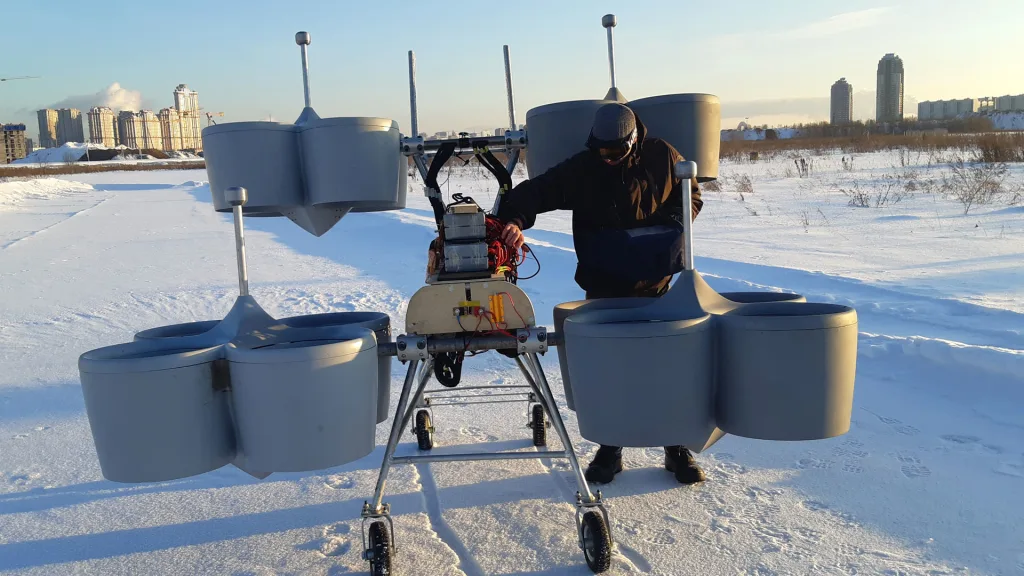Far more people know about Orville and Wilbur Wright than their sister, Katharine Wright Haskell. But without her role as essentially their business manager, the brothers may never have gotten off the ground. Women have played key roles behind the scenes in aviation as pilots, engineers, and managers. Now they are coming to the fore with an international competition to build what may seem as crazy and inspiring as the Wright family’s contraptions: so-called “personal flying machines.”

Why? Fun is one reason. “We expect that there will be human drone racing,” says Lighter, “and quidditch comes to the world.”
“It’s empowering to be flying around in the third dimension…just experiencing the world in a different way,” says Mariah Cain, the leader and test pilot for DragonAir Aviation, one of five teams that won $50,000 in Phase II of GoFly’s three-phase, two year-long competition.
Related: The Battery Guru Who Will Help Keep Uber’s Sky Taxis Flying
Lighter, Cain, and the other winners also tout practical uses for the next-level aircraft. They include airborne first responders–firefighters, police, and paramedics who can zoom to an emergency. And remote-piloted or two-person vehicles could airlift injured people out of the wilderness. Lighter hopes that airborne versions of today’s bike-sharing programs could let regular commuters soar over gridlock.
Toys for the rich are also likely, especially in the early years when such craft could cost well over $100,000. Cain imagines aircraft replacing the small boat tenders that take 1-percenters from their yachts to the dock as one possibility.
Born from extreme sports
The 10 phase-1 winners, announced in June 2018, were each awarded $20,000 for the best concept designs. (One of them, Mamba, was also led by a woman, University of Kansas Ph.D. student Lauren Schumacher.) Teams don’t have to win a previous phase to compete in subsequent ones. But four first-phase winners also won phase 2. Aeroxo LV’s ERA Aviabike and Silverwing’s S1 look like flying motorcycles. Texas A&M’s Harmony and Trek Aerospace’s FlyKart 2 resembles a flying egg and lounge chair, respectively.

DragonAir benefits from a head start it got over the competition. Cain had already mastered aerial maneuvers in an extreme sport called hydroflight, in which competitors stand on water-powered hoverboards, fed through a long hose attached to the output nozzle of a jet-ski. “It’s one of the only sports I’ve ever done where I could really shred. I could just flip it around, and I felt like a badass on the water,” says Cain, who was thrilled not only to discover the sport, but to find women competing.
She also discovered Jeff Elkins, an engineer and inventor building hydroflight gear. “We became good friends,” says Cain, “and then he realized I was the perfect size to fly his pet project, which is the AirBoard.” It maneuvers similarly to a hydroflight pack. Sensors that measure a pilot’s movements allow them to simply lean in the direction they want to go.

A long way to go
GoFly’s third and final phase–a “Final Fly-Off” in early 2020–will be far more challenging than round two. Teams will be measured and judged on a bunch of tasks, including a six nautical-mile speed run, takeoff and landing in a tight (30-foot) radius, and total endurance on a single battery charge or tank of gas.
The team with the best all-around craft will win $1 million. Those with the quietest and smallest craft get $250,000 each, and the most “disruptive advancement of the state of the art” earns its team $100,000. Boeing picks up the biggest part of the tab. (I asked Lighter how uproar over Boeing’s 737 Max crashes affected GoFly’s image. She declined to respond.)
In addition to prize money for winners, GoFly provides discounts and free assistance to all teams, like technical, legal, and regulatory advice. The hope is that the competition prepares teams to continue getting their ideas into production.
“By the time of the Fly-Off…I would like to start building the version for first responders,” says Cain. “I just feel like it’s going to make such a difference in that industry.”
Expect many surprises, says Lighter. “It would be naive of any one person or one company to think that they know the best way forward for a new technology,” she says. “We say, let’s welcome the best and brightest minds to bring us all different types of ideas so that together as a society we decide what’s the best way forward.”
Can more women be included? GoFly is making an effort, for instance, by recruiting the Society of Women Engineers as one of its partner organizations. Cain and Lighter and can serve as role models–complementing a growing number in real life and pop culture.
Cain points to the popularity of Captain Marvel–a female pilot, who can also fly without a plane. “I feel like [aviation] should be open to anybody,” she says. “So maybe it’s just getting women motivated to know that they can do this type of thing, or anything they want.”
Recognize your brand’s excellence by applying to this year’s Brands That Matter Awards before the early-rate deadline, May 3.








